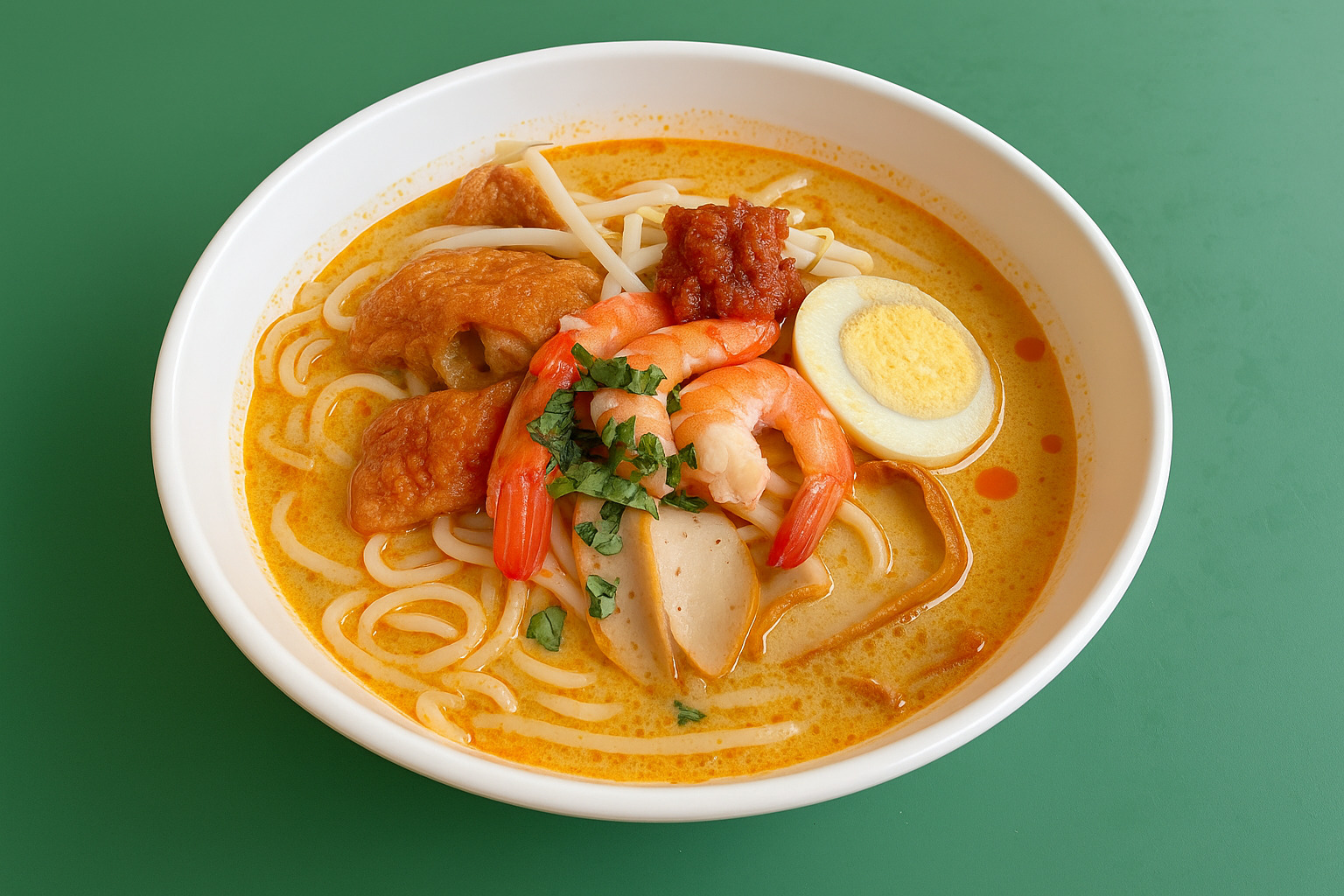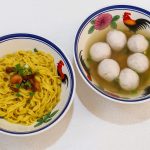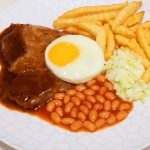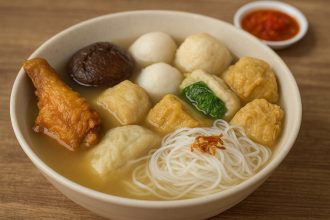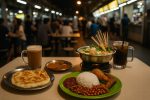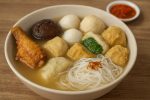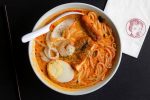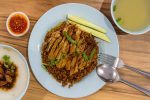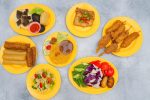Is Joo Chiat Nyonya Laksa just another bowl of noodles? Not quite. This signature dish speaks volumes about Singapore’s layered identity. Tucked within the vibrant Joo Chiat and Katong districts, Nyonya Laksa tells a story—flavored with spice, heritage, and a fierce local loyalty to the “real thing.”
What is Nyonya Laksa?
Nyonya Laksa, or Laksa Lemak, is a Peranakan noodle soup characterized by a rich, coconut-based broth. The word “Nyonya” references the Peranakan women who crafted this dish, while “Lemak” signifies the creamy depth of coconut milk. Born from Chinese and Malay culinary intersections, it’s thick, aromatic, and unapologetically bold.
Hallmarks of Joo Chiat Nyonya Laksa
1. Creamy Broth
The base is where it starts. Coconut milk forms the canvas, enriched with a spice paste and simmered with prawn or chicken stock. The result: a full-bodied broth that’s creamy without being heavy, fiery without burning out the palate. Ground dried shrimp is often included for texture, giving the soup its iconic grainy, “sandy” mouthfeel.
2. Rempah (Spice Paste)
The rempah defines the soul of the broth. Made from blended shallots, dried chilies, turmeric, galangal, lemongrass, candlenuts, and belacan (shrimp paste), it’s sautéed until fragrant and caramelized. Every cook guards their blend like a secret weapon.
3. Noodles
Thick rice vermicelli or rice noodles soak up the flavors. In Katong, noodles are cut short to be eaten exclusively with a spoon—a tradition specific to the area that reflects practical street food origins.
4. Toppings
Each bowl is layered with prawns, fish cake slices, tofu puffs (tau pok), hard-boiled eggs, and bean sprouts. A sprinkle of daun kesum (laksa leaves) adds a herbaceous lift. A spoonful of sambal on the side lets you control the heat.
The Birthplace: Joo Chiat and Katong
Laksa wasn’t created in a vacuum. It emerged from the union of Chinese traders and local women in Southeast Asia—forming the Peranakan community. These women began integrating Chinese noodles with Malay spices, coconut milk, and herbs.
In Singapore, Joo Chiat and Katong became epicenters for this fusion. Their Peranakan shophouses still stand today, and within them, generations of cooks have kept laksa traditions alive. From pushcarts to tiled food stalls, the recipe has been passed down with minimal compromise.
Historical Anchors
- 1940s–50s: Ng Juat Swee, nicknamed Janggut (Malay for “beard”), began selling laksa from a pushcart.
- East Coast Road: His stall eventually evolved into what many call “The Original Katong Laksa.”
- Street-to-Stall Evolution: Katong Laksa became synonymous with heritage laksa, spurring friendly rivalries among vendors.
Notable Laksa Institutions in Joo Chiat/Katong
The battle for the best Katong Laksa is ongoing, but three names frequently surface:
1. 328 Katong Laksa
- Reputation: Beat Gordon Ramsay in the 2013 Hawker Heroes challenge.
- Flavors: Bold, spicy gravy with robust coconut cream.
- Presentation: Short noodles, spoon-only consumption.
- Reach: Multiple branches islandwide.
- Awards: Michelin Bib Gourmand recognition.
2. Janggut Laksa (The Original Katong Laksa)
- Legacy: Traces back to the founder who started the laksa wave.
- Locations: Includes a prominent outlet at Roxy Square.
- Flavor Profile: Fragrant and savory, but lighter and less creamy than some competitors.
- Reputation: Revered for staying closer to the original 1950s formula.
3. George’s Laksa
- Story: George Ng learned the craft from his father, a disciple of Janggut himself.
- Location: Along Changi Road.
- Taste: Creamy, umami-forward broth with a generous helping of dried shrimp bits.
- Fanbase: High online ratings and considered a hidden gem by many.
Crafting Nyonya Laksa at Home
The dish may seem simple in appearance, but its preparation is layered.
Step-by-Step Breakdown
- Prepare the Rempah:
- Blend shallots, dried chilies, galangal, turmeric, lemongrass, candlenuts, dried shrimp.
- Fry the paste until deeply aromatic.
- Simmer the Broth:
- Add the paste to prawn or chicken stock.
- Stir in coconut milk.
- Toss in daun kesum for fragrance.
- Assemble the Bowl:
- Lay down cooked rice noodles.
- Top with blanched prawns, sliced fish cake, boiled eggs, tau pok, bean sprouts.
- Final Touch:
- Ladle hot broth over the ingredients.
- Garnish with fresh laksa leaves.
- Serve with sambal on the side.
Why It Matters
Joo Chiat Nyonya Laksa isn’t just food. It’s part of a larger narrative of migration, marriage, adaptation, and resilience. It reflects how communities integrated their flavors and adapted their kitchens to changing times without losing their identity.
Every spoonful carries the spirit of the Peranakan matriarchs who cooked with mortar and pestle, not measuring spoons. It embodies the resilience of hawkers who stirred broth under monsoon tarps and the pride of neighborhoods who still claim bragging rights to their favorite bowl.
This isn’t nostalgia. This is sustenance with character—rooted, hot, and unapologetically local.
